
We – my better half & I – went to Athens (Greece) in 2017 for work & pleasure as well as exploration & enlightenment. Our adventures – we’re dealing now w/ exploration & (maybe) enlightenment – started w/ approaching the Acropolis of Athens, the centre of classic Greece.
„Approach“ means coming near to the Acropolis, walking around the Acropolis … & taking a lot of photos from afar. Next step on our agenda was to enter the Acropolis area, climbing any winding footpaths to the top, exploring all the remains of temples … & also taking lost of photos. Finally we descended to the Agora & admired all the ruins … This post is a short summary of our activities.
How did we start?
We climbed in a Metro … (yes: Athens has got a brilliant Metro system!) …& resurfaced (almost) vis-à-vis the Acropolis.


Our very 1st glimpses of the Acropolis (including signs of restorations works):

So we started our tour around the Acropolis hill (based on „The Grand Promenade“ (an offspring of the Olympic Games)).
We had an encounter w/ the Temple of Olympian Zeus (only 15 columns of originally 104 survived). Our travel companion says that it took about 600 years to build the temple – it was pillaged only 200 years later.

Next encounter we’ve had on our walk was w/ Hadrian’s Arch. (I’m sure all of you are fluent w/ ancient Greek & Roman history, however, just for information: Hadrian was an Roman emperor living in the 2nd century – when Greece was occupied by Romans.)
From the temple grounds through the arch you have a magnificent view of the Acropolis revealing its original nature of being a fortress.
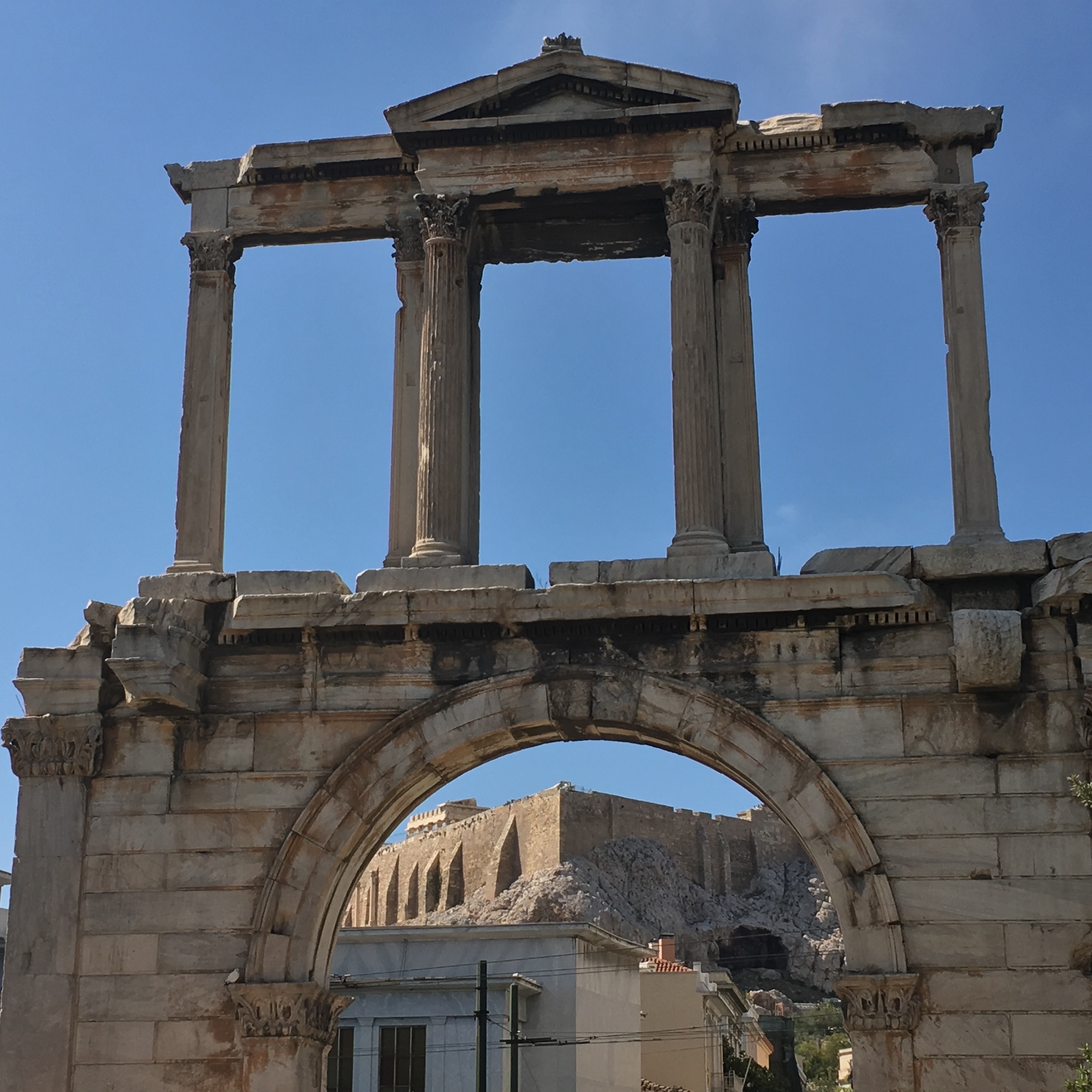
Resuming out stroll along the Acropolis area … Near the Acropolis main entrance we found a viewpoint giving us an overview of central Athens!

Slowly we’re approaching urban life near the Acropolis …
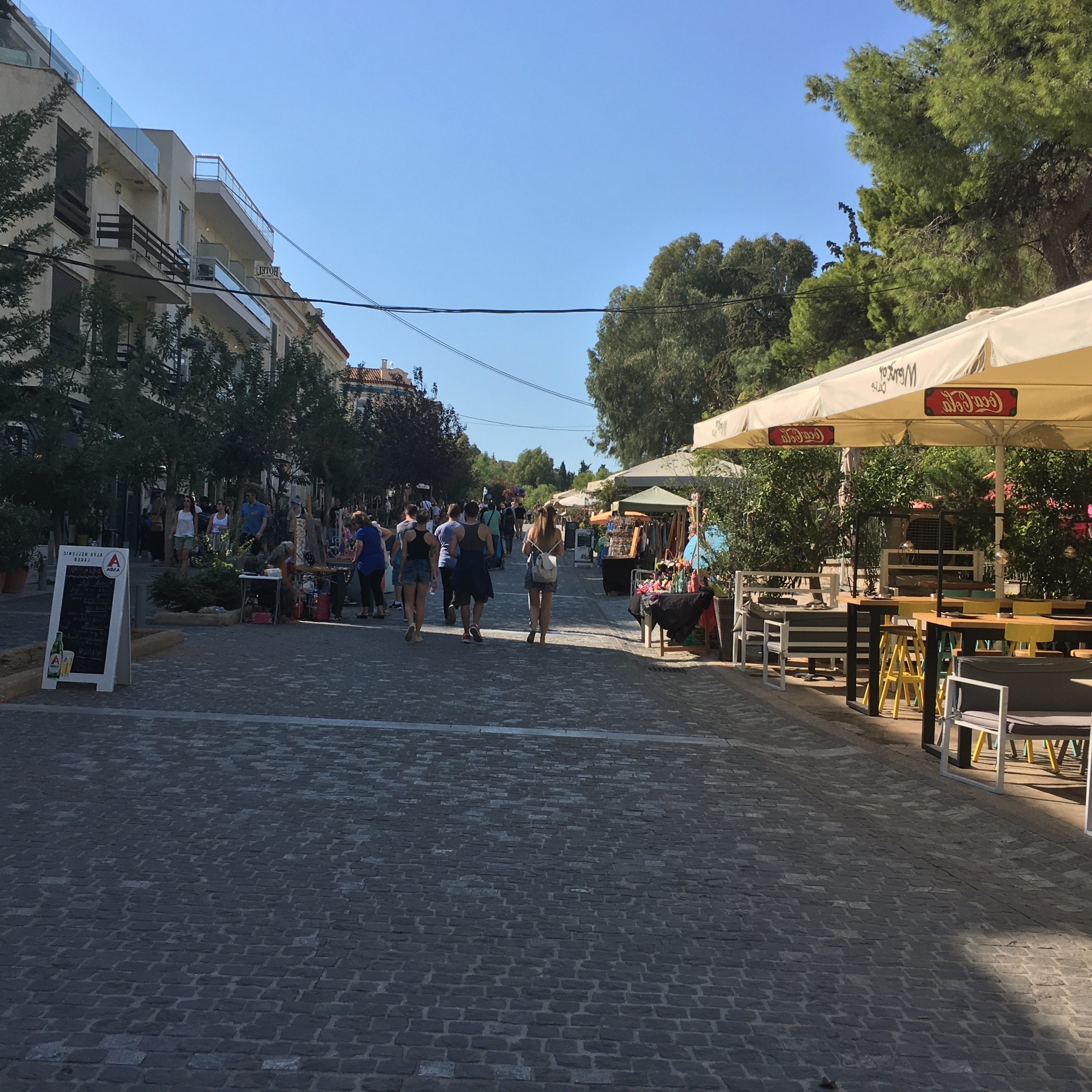
… & we finally had an encounter w/ Hadrian’s Library (or what remained during the centuries …):

Suddenly we made a deep dive into Monastiraki:
- cafés
- bars
- restaurants
- shops
- shops
- shops
- …
It’s a busy quarter w/ narrow alleyways – all along the Acropolis area.
Now another view of Acropolis – we’ve almost closed the walking circle.

It was a long way …
We indulged in sightseeing & history & archeology & ancient Greek mythology – probably sometimes we walked where centuries ago all the famous Greek philosophers had walked for the Acropolis of Athens is one of the birthplaces of our European civilization.
So from ethos (ηθος) to pathos (παθος) to myth(os) (μυθος) …
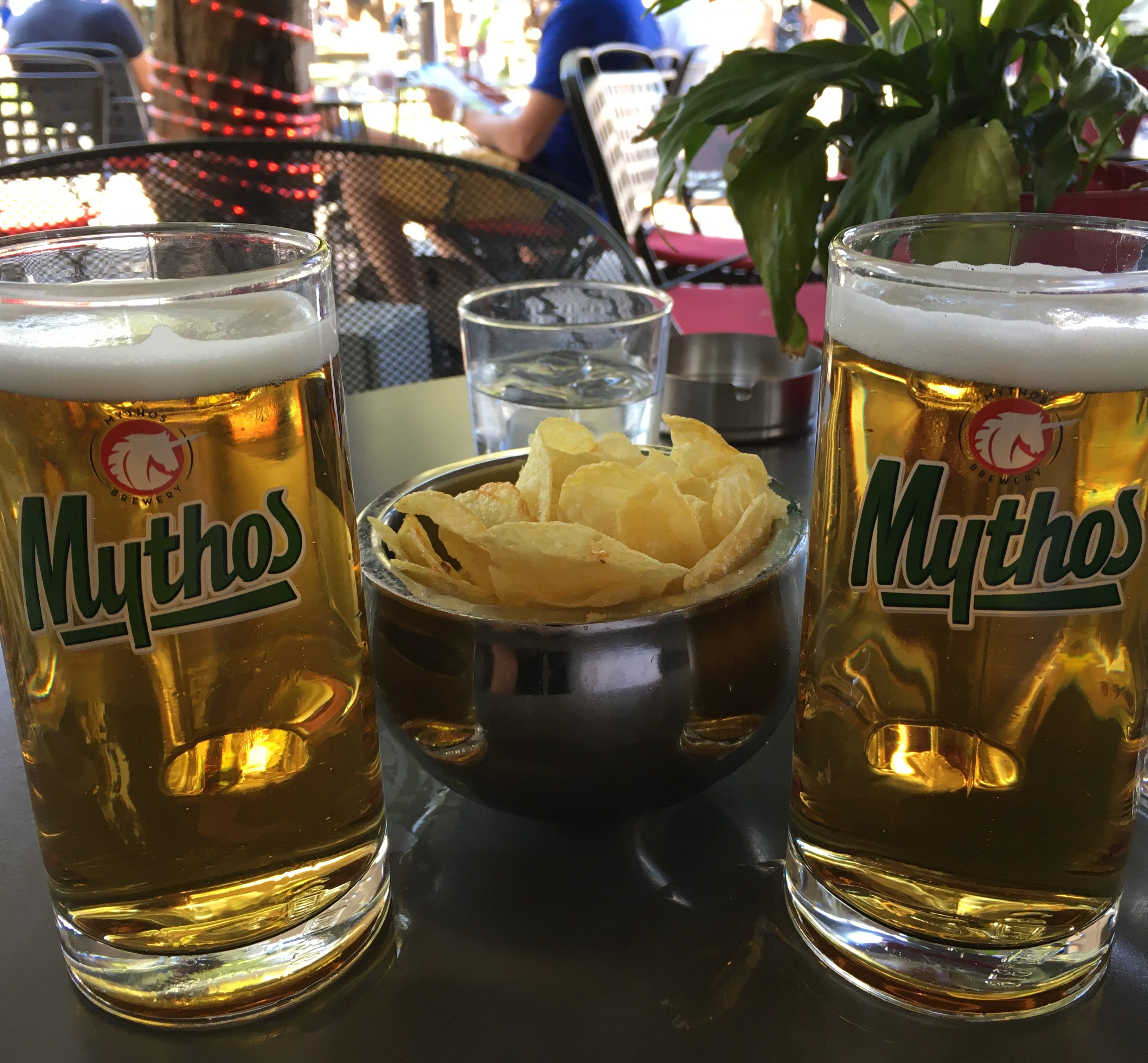
The next step on our agenda: entering the acropolis area!
(You get a 1st glimpse of the rough ground & the tourists milling around!)
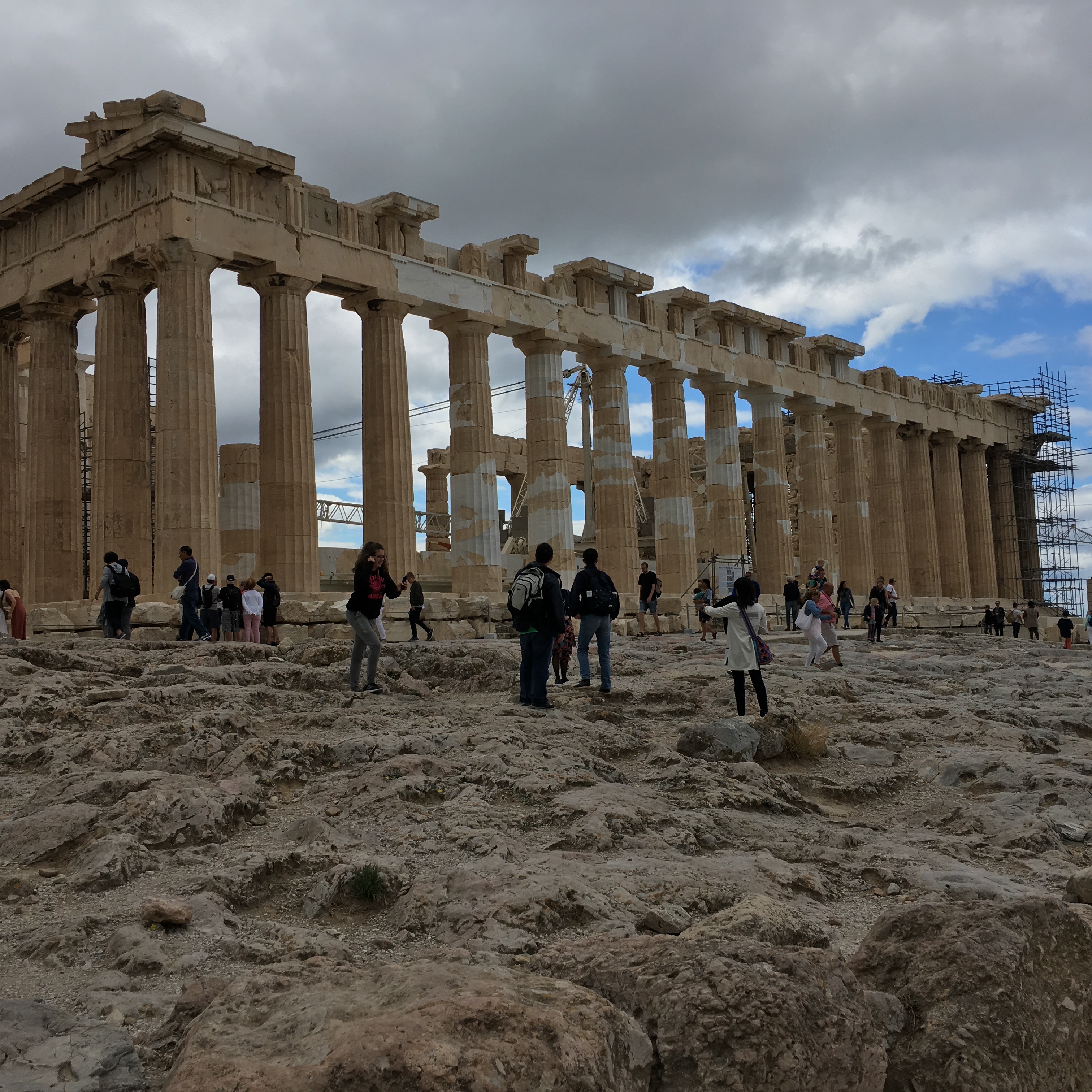
However, before walking the Acropolis we went to the Acropolis museum. It’s light & airy – the main showpiece is on the top floor: the Parthenon Gallery. In an 1:1 representation the Parthenon pediments, metopes & the fries (160 m long) are reconstructed: you may stroll around & admire the work at eye level! Original parts of the Parthenon (very few!) are complemented by replacements and/or paintings/drawings to give a hint of its ancient beauty.
(… & it’s meticulously noted which original parts ended up deliberately in the British Museum in London …)
The main part of the Acropolis is the Parthenon, the ancient temple dedicated to the goddess Athena – the largest Doric temple in Greece completed almost 2500 years ago.
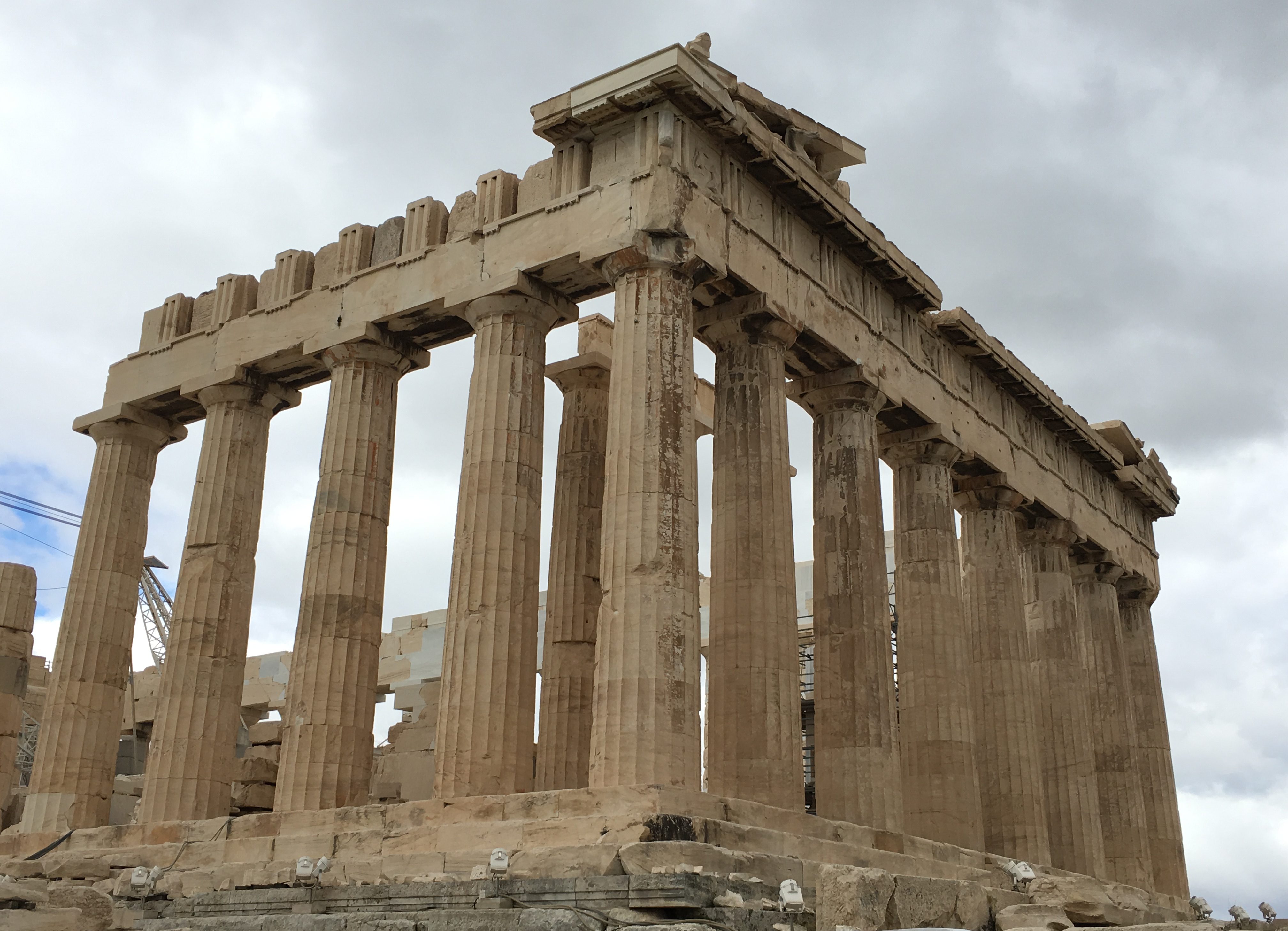
On our way up we had a breathtakingly view of the Odeon of Herodes Atticus, an amphitheater about 1800 years old, restored & used for concerts now.

There’s the bottleneck at the entrance of the Acropolis w/ tourists, the way around the Parthenon w/ tourists, the way back w/ tourists …

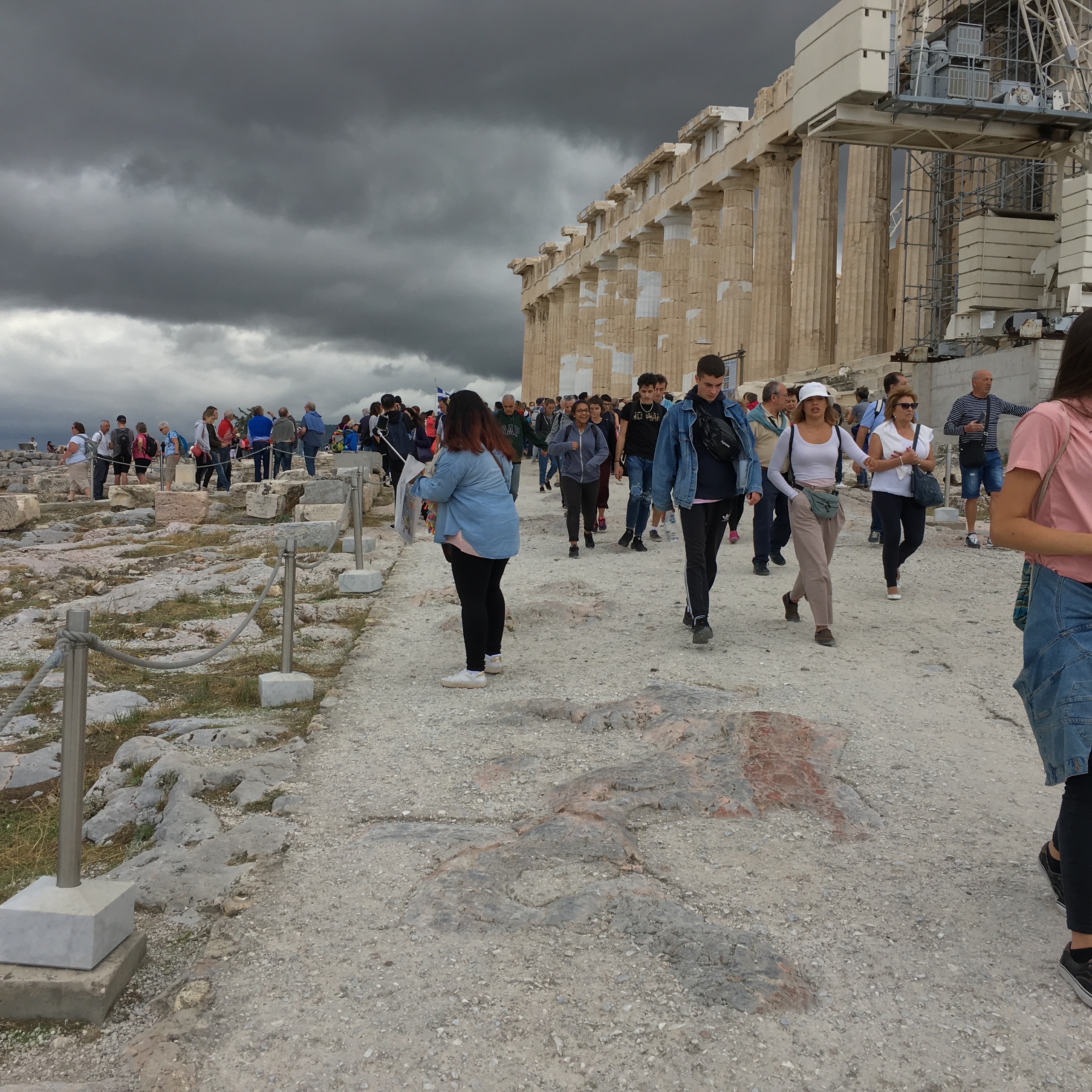


Coming to the Parthenon… (we had some rough weather: again & again there were dark clouds shooting along the blue sky, but there wasn’t any rain!).
There are both narrow sides of the Parthenon w/ the famous pediments (east & west). There are the long sides missing some pillars … The Parthenon was badly damaged during the centuries especially when stored gunpowder exploded in the 17th century, cannons fired at it & would-be archaeologists in the 19th century pilfered the Parthenon. Only few details survived …
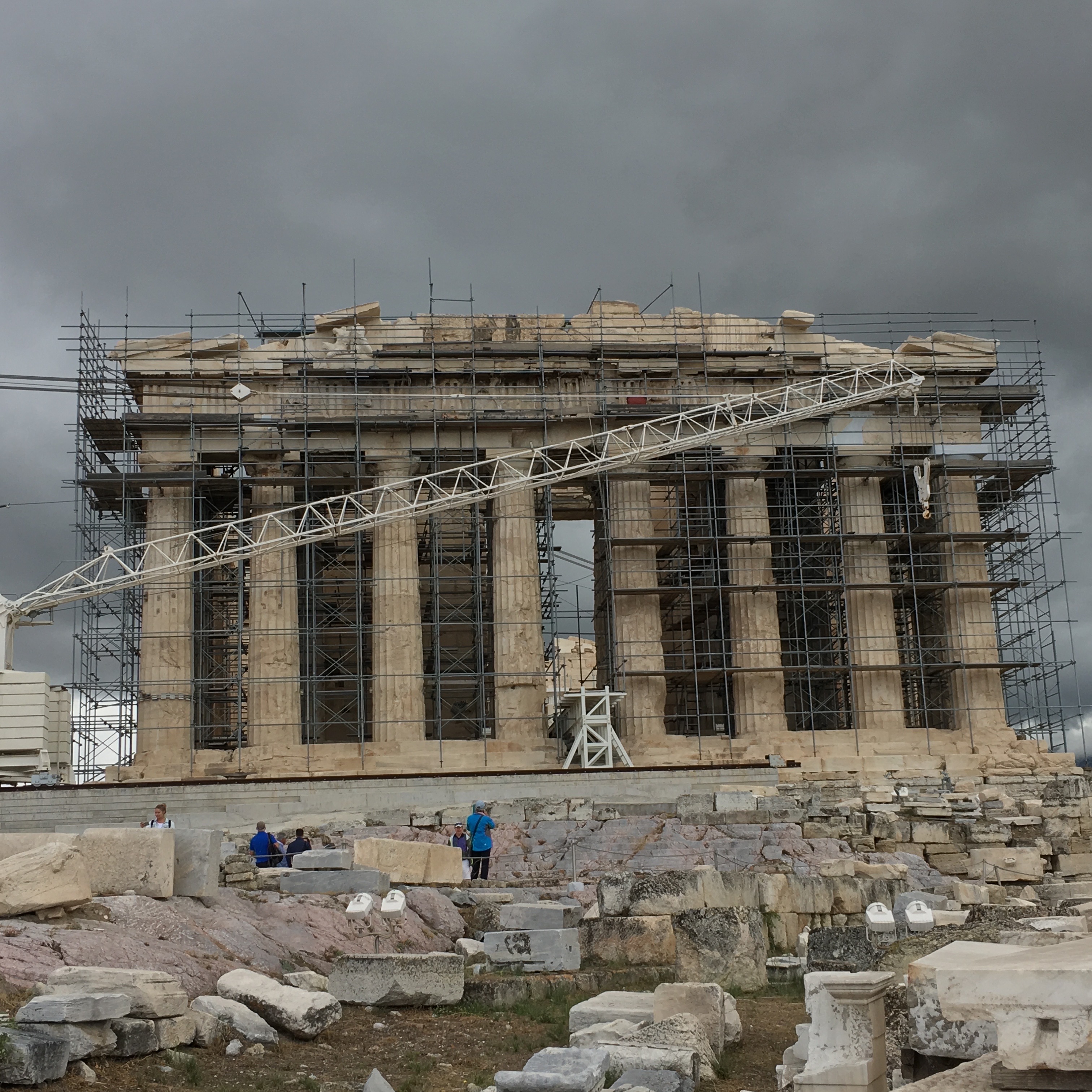



While the Parthenon was dedicated to Pallas Athena (in her role as goddess of wisdom) there is another rather small temple dedicated to Athena Nike (in her role as the goddess of victory). You are not allowed to access the site.

… & there are the remains of a temple dedicated to Athena & Poseidon (& Erechtheion (an ancient mythical king)) which flags the place where Athena & Poseidon claimed their authority of Athens: Athena by planting an olive tree (the winner!) & Poseidon by striking a rock w/ his trident to let a spring emerge …
This was the most sacred part of the Acropolis in ancient times!
The maidens on the porch (the Caryatids) are now in the Acropolis museum – these are replicas: nevertheless beautiful!
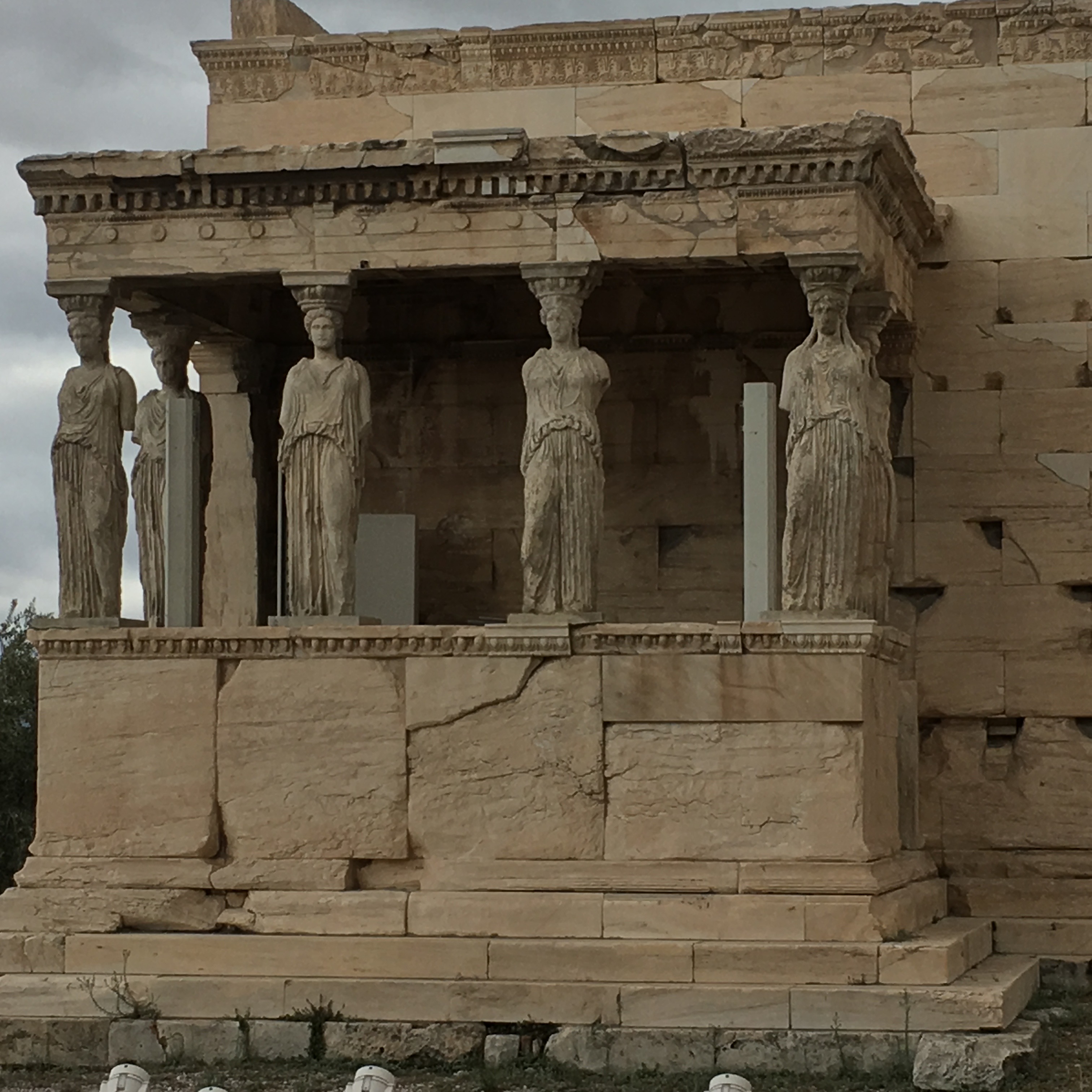
… & finally some snapshots of pillars & of the debris around the Parthenon (there’s a real lot of it – my admiration to all the archaeologists who dealt w/ it in order to restore parts of the pediments, metopes & the fries!).




It was a long & slow walk – the Acropolis is a vast area full of rocks & stones & rubble … however, also of some gemstones!
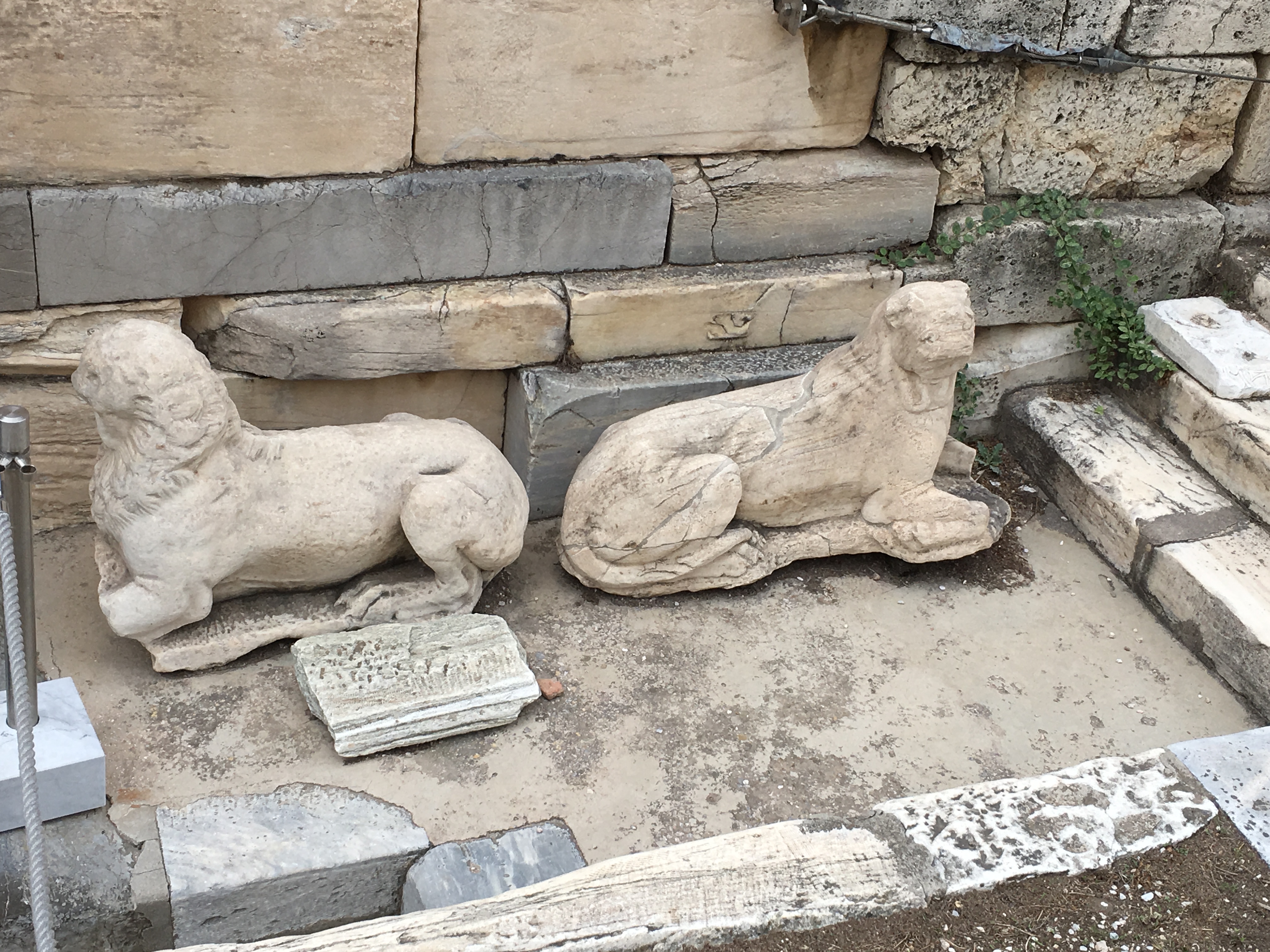
Descending from the top of the Acropolis, the holy site, into the real life of the Ancient Agora where politics & economy & philosophy ruled the scene …

… a short walk ends into crossing the Ancient Agora (which leads us finally into Monasteraki w/ lots of restaurants, cafes, music, locals as well as tourists).

Let’s start visiting one of the best preserved temples in Athens. It’s the Temple of Hephaestos overlooking the Ancient Agora.
Isn’t the temple gorgeous? All columns are standing, some reliefs are still (partly) undamaged.
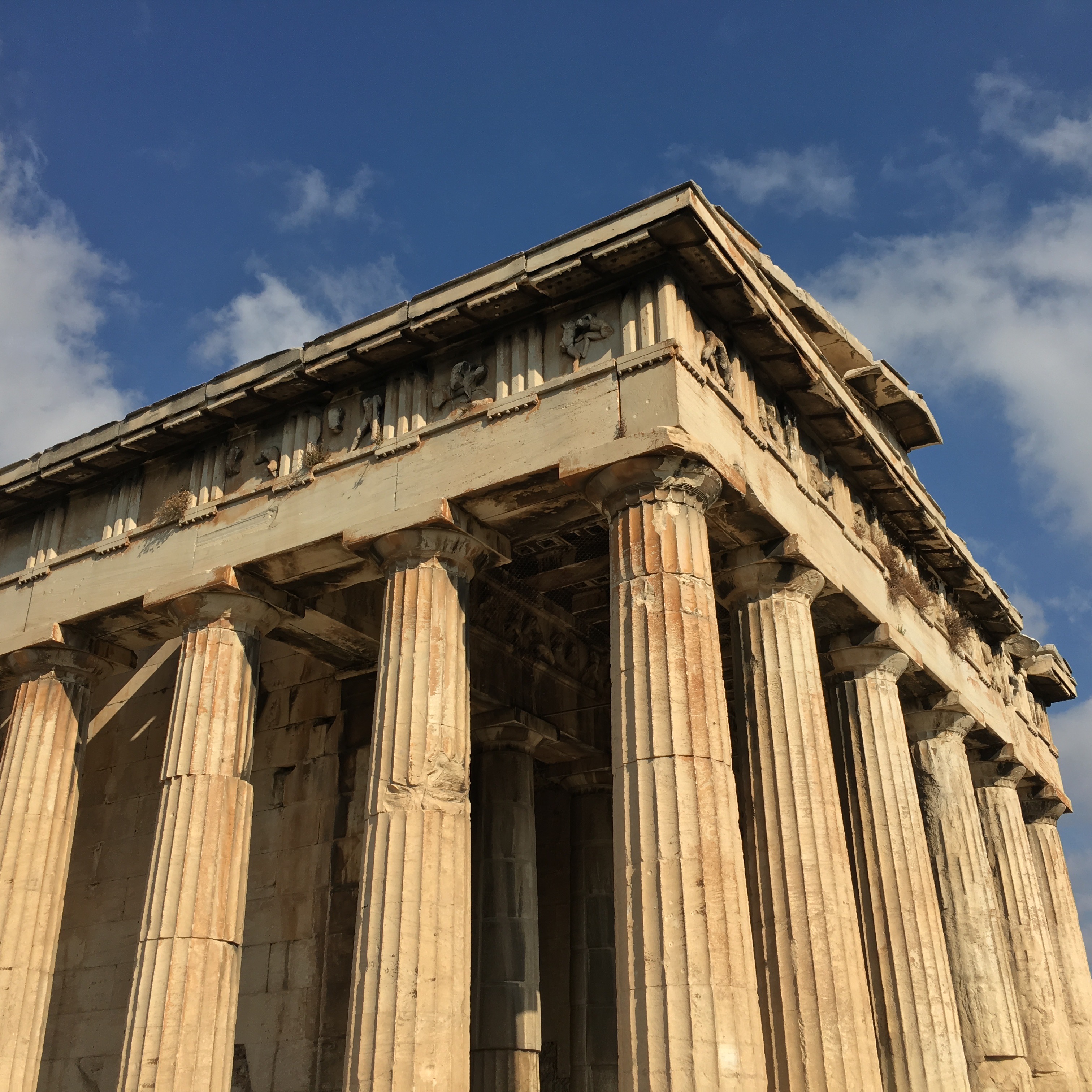


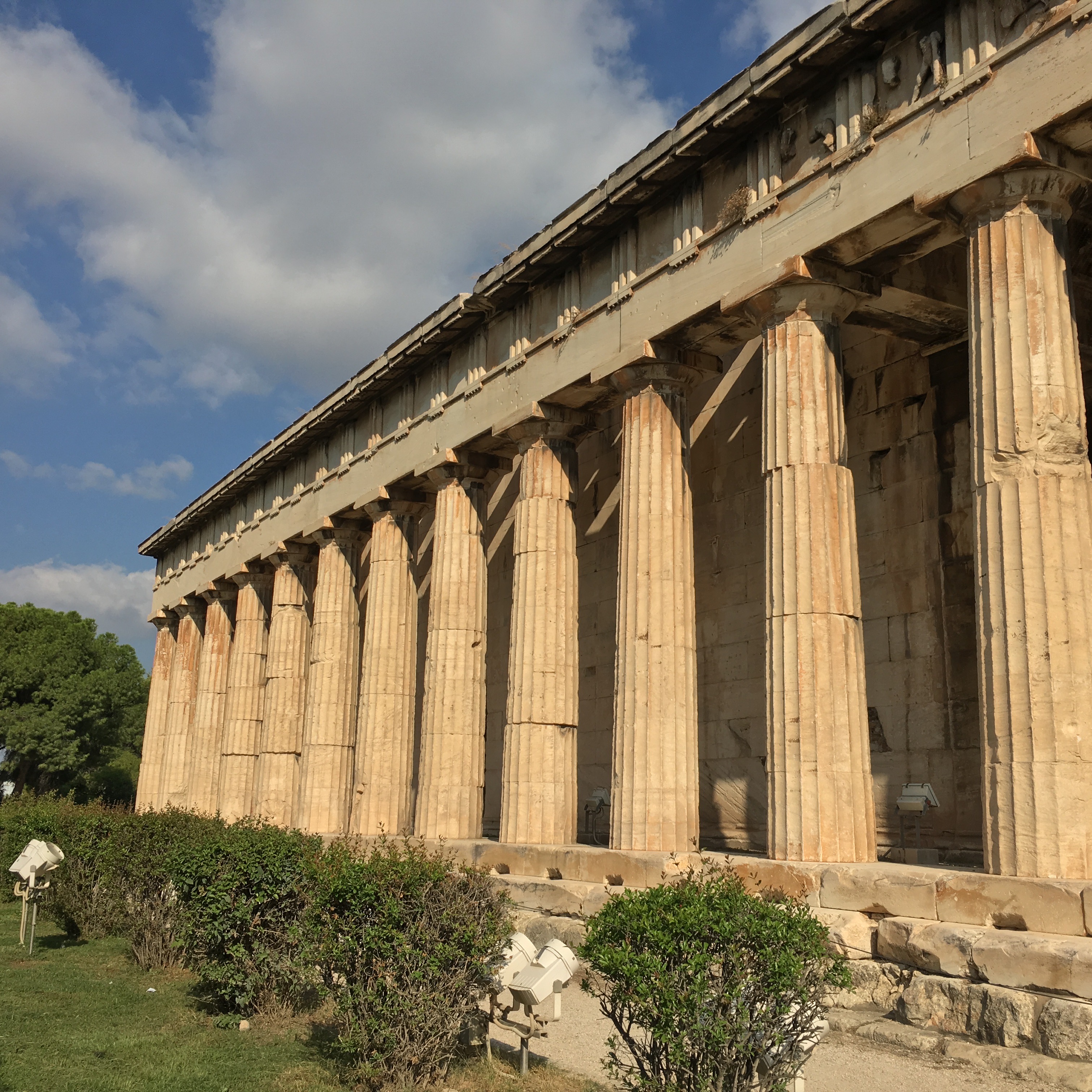
From the temple grounds you may admire the vast Ancient Agora. Besides the Temple of Hephaestus there were also temples for the ancient Greek gods Apollo & Ares.
The Ancient Agora – unfortunately only present by foundation walls & remains of pillars – was the heart of Athens’ state & democracy. Here were the assembly halls & places for the representatives of the people where the decisions about war & peace, economy, court procedures … were made – in ancient times about 2500 years ago when for the 1st time a modern state was established.




In the Agora Museum based in the reconstructed Stoa of Attalos results of the archaeological excavations organized mainly in the last century are displayed.





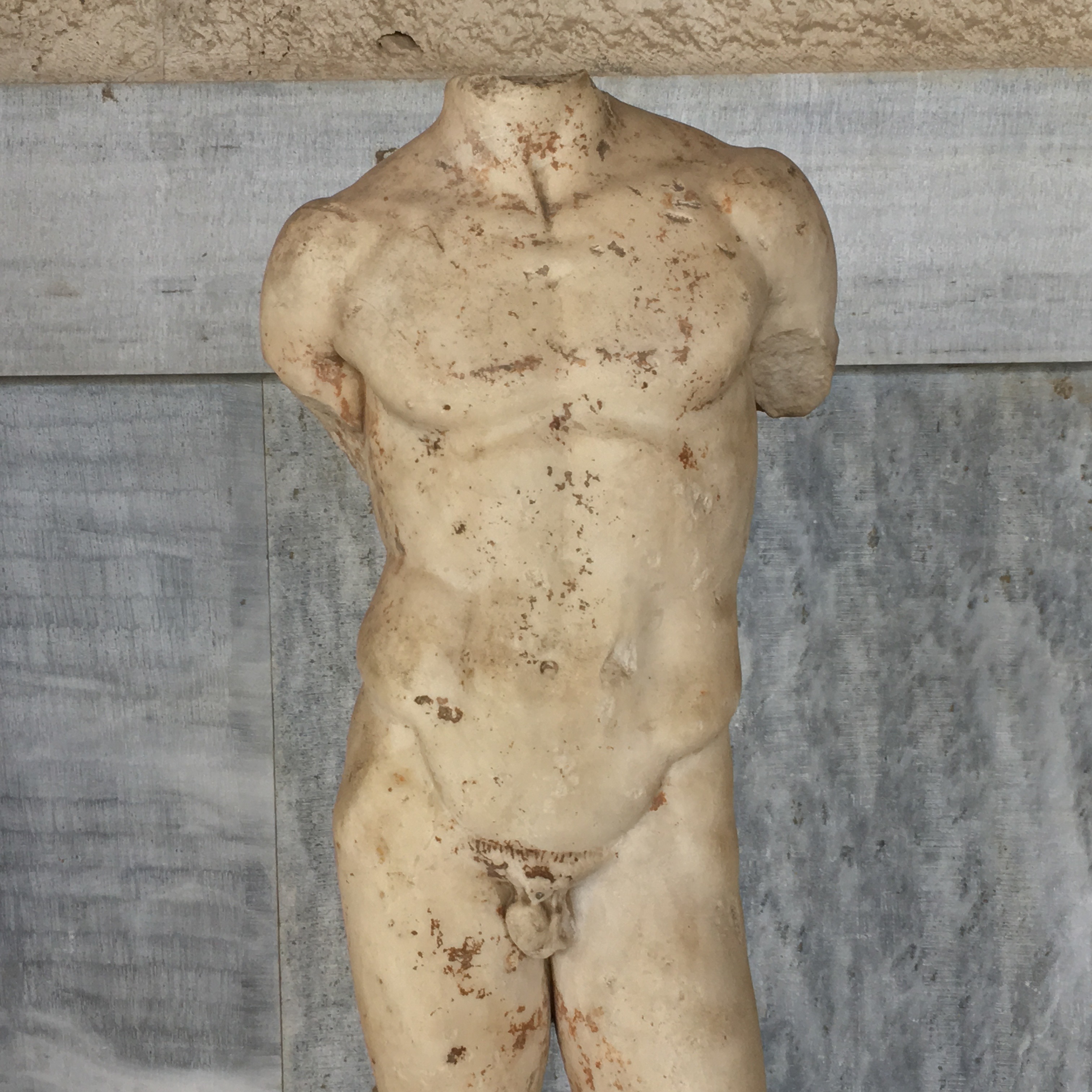
When leaving the Ancient Agora you (automatically!) end up in front of the Roman Agora established some centuries later when the Roman empire became master of Athens.
So – now we’ve managed the Acropolis in its fullness from all perspectives appreciating the birthplace of Western democracy & modern political systems.
